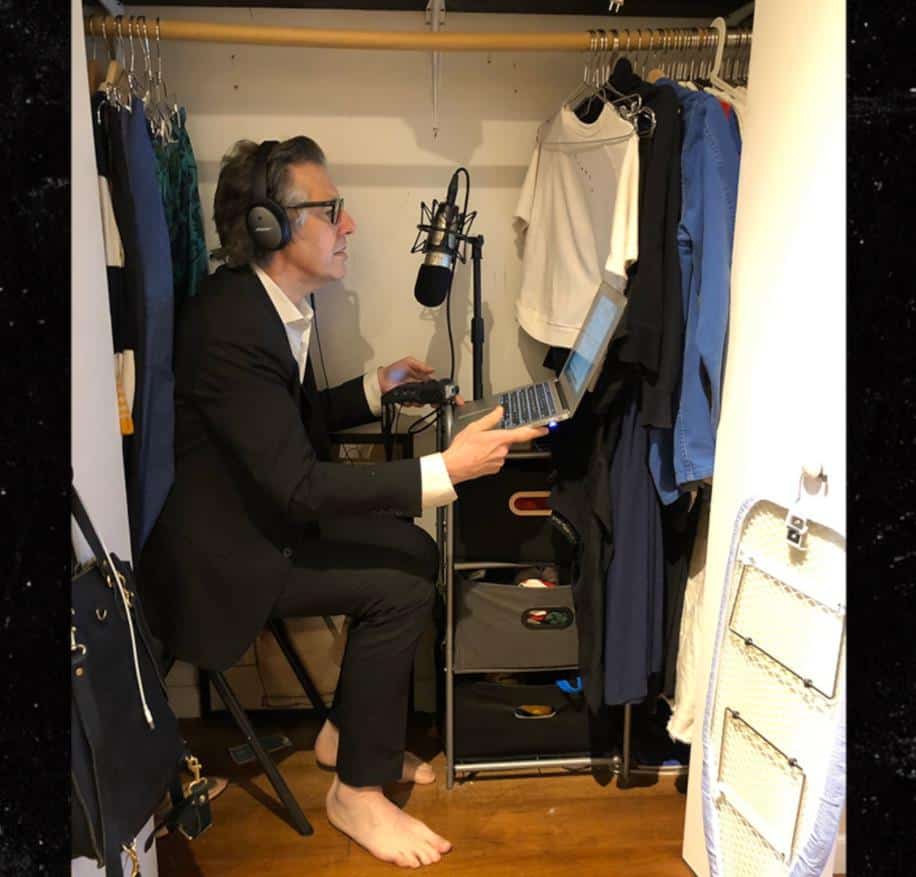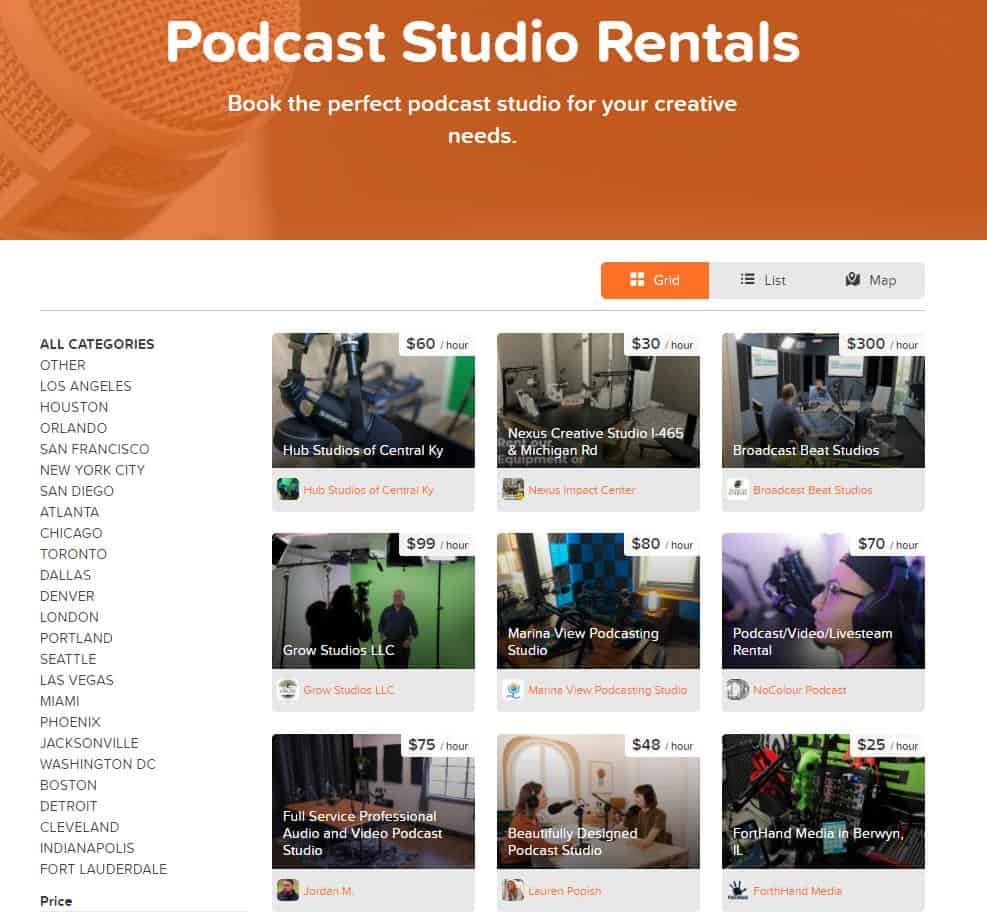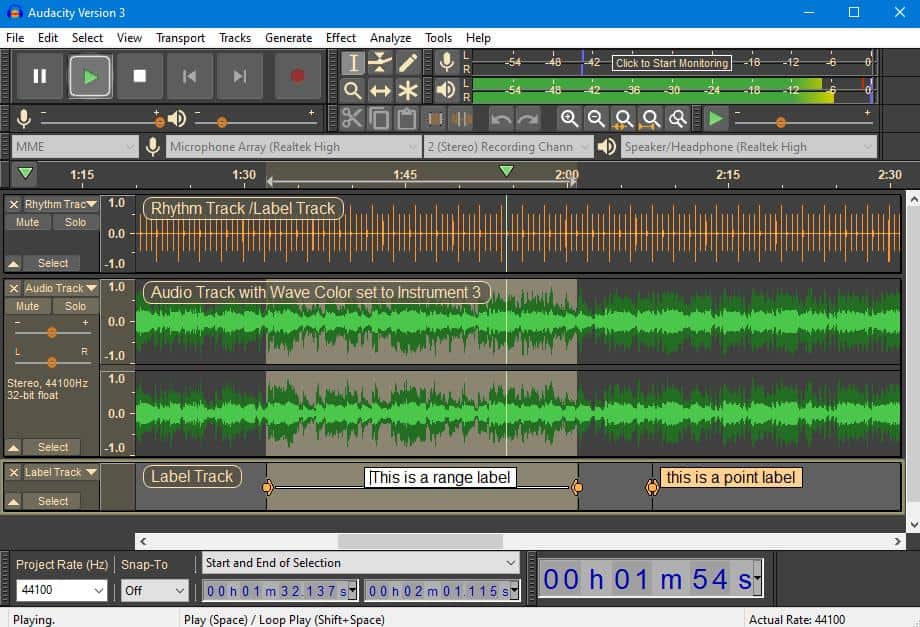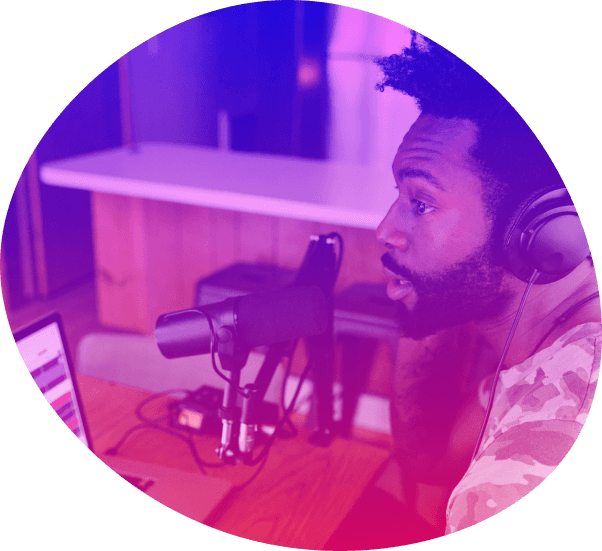How Much Does It Cost to Rent a Recording Studio
Your podcast studio is your home base. It's where your episodes leap off your notes and come to life; where your content takes form and spreads through the world. So if you're serious about your show, you need a decent podcast studio setup.
Why is it important to have a quality recording studio? Because a good performance is critical to the success of your show. People don't invest their time in shows that produce low-quality audio. And if your studio sucks, so will your audio.
But let's be clear about one thing: You don't need a state-of-the-art space with tens of thousands of dollars of podcasting gear. Some shows have those setups, and you might someday, but if you're just starting a podcast, your needs are far simpler.
In fact, even though it's important to have a good podcast studio setup, we don't recommend waiting around until you have the time and money to build one. It's better to start recording episodes sooner rather than later. The sooner you learn what makes a great episode, the sooner your fan base will start growing.
In this article, we're going to lay out a few key steps to build your own podcast studio setup. You don't have to burn through your savings to follow this advice, though spending a few hundred bucks will go a long way towards top-notch audio.
Need help getting your podcast off the ground?
With Castos' Podcast Launch Service, our team of professional audio engineers, show note writers, and marketing pros work with you to create marketing assets, map out episodes, and make sure your podcast is set up for success. Enter your information to request a free consultation.
Step 1: Choose the Right Space
Your first step is to choose the right podcasting space. The nature of your home podcast studio will have the biggest impact on the sound quality of your audio.
"I have the perfect space," you might be thinking. "I'll just use my empty basement / garage / spare bedroom." Not so fast. An empty space isn't necessarily the right space. In fact, empty spaces often make poor recording studios because they create lots of reverb. The best spaces are usually full of stuff.
If you don't have the resources to build your own recording space from the ground up (most podcasters don't, especially in the beginning), nearly any room in your house will do. Choose spaces with lots of soft surfaces, like carpeting, rugs, and fabric furniture. Avoid rooms with hard surfaces, like your kitchen or rooms with hard flooring.
You should also choose a space that is minimally affected by external noise, like rooms that are on the opposite side of the street or rooms that don't share walls with common areas of your home. Finished basements are often great because they don't share walls with other rooms.
Believe it or not, many podcasters opt to record in their closets. These small spaces with lots of soft material are often perfect to get clear audio without echoing. Here's NPR's Ira Glass – who runs "This American Life" – narrating an episode from the smallest space in his house.

If you aren't into the DIY approach, you can always rent a podcast studio through a service like Podcast Rentals. You'll find these rental studios in most major cities. They cost about $60-$100 per hour and often include cameras for video podcasting.

Step 2: Soundproof Your Podcast Studio Setup
Once you've chosen a good location, your next step is to add some sound treatment. Every step you take to improve the sound quality of your recordings means less time spent editing the imperfections later.
Soundproof foam panels are the best solutions here. Their purpose is to absorb sound so it doesn't bounce all over the room and hit your mic. You can pick them up on Amazon. Attach them on hard surfaces, like blank walls, cabinet faces, or even the ceiling.

If you don't want foam panels, blankets are great DIY alternatives. Hang your blankets on walls and drape them over hard surfaces. Drop some pillows around the room as well, like on top of empty desks or in portions of the floor uncovered by rugs.
Step 3: Grab Your Recording Equipment
Your podcast studio setup wouldn't be complete without a few pieces of podcast equipment. How much you buy is up to you, however. Technically you could record episodes with your laptop microphone, but the sound quality would be… unideal. To save you the time and hassle of editing your episodes, we recommend grabbing a few pieces of gear.

Here are seven essential pieces of podcasting gear you need to create the perfect podcast setup. You may have several of these as well.
(Note: These links take you to our individual recommendations. They are not affiliate links. Castos does not earn a commission if you purchase any of these equipment recommendations. The products included are based on our own podcasting experience and research.)
Computer
You'll need a computer to run the software that records and edits your episodes. You'll also need it to upload your episodes, write show notes, and market your podcast.
XLR or USB microphone
Your microphone is the most important part of your podcast studio setup. It has the greatest impact on the quality of your audio. A good condenser microphone will save you a lot of time during post-production. An XLR mic and USB microphones each have their advantages and disadvantages.
Mixer
A mixer will improve your audio quality and offer multi-channel recording horse shows with guests or co-hosts. This isn't a required piece of equipment (unless you use an XLR microphone), but it makes amazing audio. Choose one with multiple channels and an AUX-out feature.
Audio Interface
Not all computers have an audio-in port these days. Macs, for example, have not had it for quite some time.
To record audio to your computer, connect your mics, and other gear, you will need to use a dedicated audio interface.
Pop filter or windscreen
Good microphones tend to make the plosives in our speech (Ps, Ts, Ks, etc.) stand out, so you need a pop filter to soften those hard bursts of air. These are not expensive, but they make your audio more pleasing.
Headphones
Headphones make it so you hear what the microphone hears, rather than your voice in the room. They allow you to self-regulate your volume and tone during your recording. (And remember, better records = less editing). Any headphones will do, but sets that cover your ears completely (as opposed to ear buds) are better.
Microphone stand
A mic stand or boom mount gets the mic up off the desk and closer to your mouth. This is important because the vertical alignment impacts the sound of your voice. A stand also lessens that chance that you'll bang or rub something against the mic during recording.
Acoustic treatments
Some podcasters work cheaply by covering themselves with a blanket while they record. This technically works, but it gets old fast. Eventually you'll want to pick up some acoustic treatment pieces that function well and look great in your room. Use Auralex's Room Layout Express tool to determine where to place the pieces.

Basic office equipment
Beyonder podcasting gear, you also need some basic office equipment. Give yourself a sturdy desk or table for your computer, microphone, and other audio equipment. They also want a comfortable chair (but not too comfortable) and whatever else you need to sit through you're recording sessions.
Step 4: Pick Your Podcast Editing Software
Most people don't enjoy editing their episodes, but it's a critical part of producing good sound quality. You'll need to adjust volume levels, remove background noises and mistakes, and slice in your intros and outros and your ads, so editing software deserves some consideration in your podcast studio setup.
Need help editing your podcast?
Let our team of professional audio engineers, show note writers, and marketing pros take care of the entire post-production process. Enter your information below to learn more.
There are a lot of audio editing options available. Here are our favorites:
- Audacity
- Hindenburg Systems
- Adobe Audition
- Pro Tools
Audacity is the most popular because it's free, though you'll need to purchase it to access licensed music, effects, and a few other podcasting tools. We think it's worth the cost because having those effects and features available in the same tool is worth it.

Can you use the free audio editor that came with your computer? Most likely, sure. Apps like GarageBand are sufficient, but paid tools come with simpler workflows and more features to create better sound.
Step 5: Choose a Podcast Hosting Service
The final component of your podcast studio setup is a podcast host. Technically this isn't part of your podcast studio, but it's a critical part of distributing your show, so we didn't want to leave it out.
Your podcast host is your show's window to the world. It's how everyone experiences your content. You need a hosting service that exhibits your audio just as clearly as you record it.
Castos gives you the tools to grow your audience, and connect with your community. We don't impose bandwidth limits, so listeners can always access your content. And you can manage all of your podcasts with one WordPress plugin. We also offer automatic YouTube republishing private podcast, and transcription services.
Build Your Podcast Studio Setup Today
As you can see, it doesn't take much to build an effective podcast studio setup. It doesn't take much time and you don't have to spend a lot of money. But if you follow these simple steps, you'll create podcast audio that's clear and professional.
Podcast Hosting Made Just For You
Castos makes it easy to build, grow, and monetize your show

No Credit Card Required

How Much Does It Cost to Rent a Recording Studio
Source: https://castos.com/podcast-studio-setup/